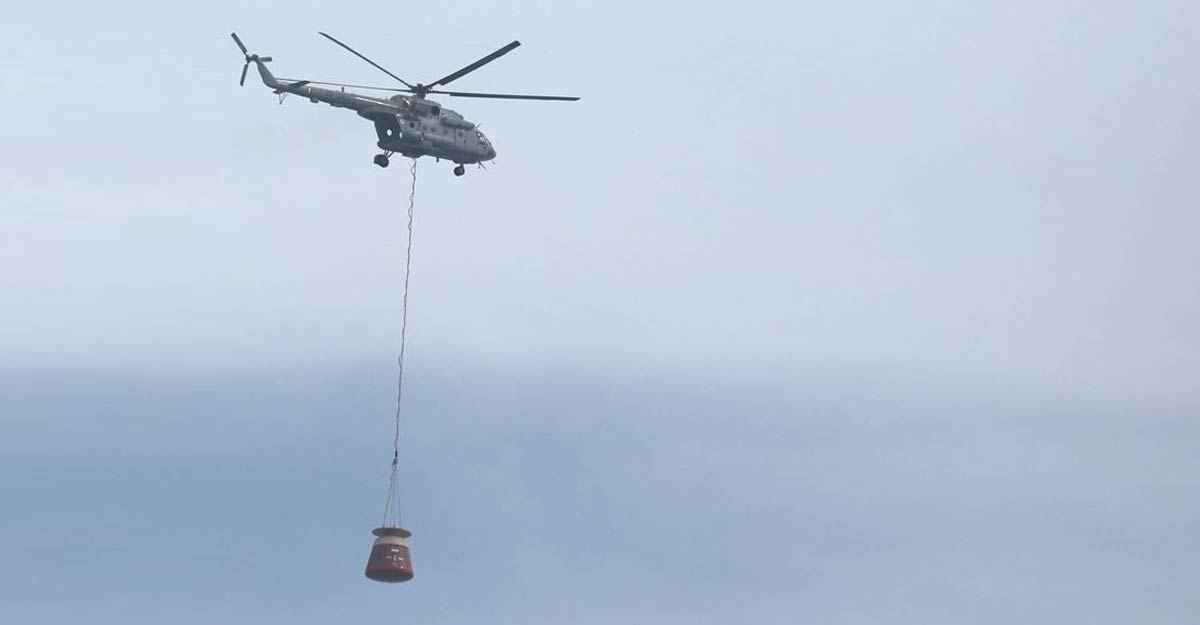
SOURCE: Anantha Krishnan M / MANORAMA ONLINE
The most-awaited final stage of any manned space mission is the safe landing of astronauts returning to earth. In Gaganyaan, India’s manned Human Spaceflight Programme (HSP), this extremely critical event will be executed by home-grown parachutes made by the Agra-based Aerial Delivery Research and Development Establishment (ADRDE).
One of the silent wings of the Defence Research and Development Organisation, ADRDE has been tasked with ensuring that our astronauts waft to a safe and soft landing.
In this edition of Gaganyaan Unplugged, the seventh in the series, we look at ADRDE’s efforts at developing a parachute system for the smooth landing of the space capsule carrying Indian astronauts back on earth.
ADRDE began work on developing recovery systems for Gaganyaan in 2008 with the conceptual design. Prior to this, scientists there had developed a recovery parachute system for Space Recovery Experiment (SRE) of 600-kg class payload.
The experiment was conducted by the Indian Space Research Organisation (ISRO), and the payload was successfully recovered from space in 2007.
Speaking to Onmanorama on the challenges of developing such products, an official said the scientists had to start from scratch as not much literature or similar systems were available for benchmarking.
“The crew module of HSP is a heavy weight four-tonne weight class re-entry payload carrying crew onboard. The challenges involved in the parachute system are manifold. High strength-to-weight ratio as well as minimum packing volume of the parachute systems is of utmost importance,” the official said.
Rigorous testing
Ahead of the trials, the recovery systems were put through rigorous testing for qualification at different levels. This included testing of raw material of different textiles and their fabrication, integration, testing in high speed dynamic conditions, aerial drop test simulation from military aircraft, system-level test from helicopter and system evaluation at 20-30% higher loading conditions.
“Challenges also involved mathematical modelling of G-shock due to parachute deployment, its effect on crew and simulation of window timings/event marking for each operation. All associated parameters are interlinked scientifically and logistically. Meticulous auditing of the effect of change of one parameter on other parameters is extremely critical with respect to flight trajectory and safety margins,” the official said.
With parachutes being flexible structures, instrumentation of such systems for their performance evaluation was a huge challenge for the scientists.
The iterative processes for the different kinds of technical textile items — both in terms of physical as well as performance parameters — are critically examined by senior scientists and experts from DRDO, ISRO, IITs and other reputed engineering institutions.
Tests Continue
After all sub-system level qualification tests conducted by transport aircraft and Rail Track Rocket Sled (RTRS), the parachute system was tested in simulated environment using helicopter, and real-time environment during Crew Module Atmospheric Re-entry Experiment (CARE) in which the unmanned module was taken up to 126 km altitude (close to low earth orbit) and brought back to earth’s surface safely by the parachute system on December 18, 2014.
The upcoming unmanned mission of Gaganyaan (5,000 kg weight class module) will be incorporated with the parachute system of ADRDE, which will recover the space module safely after re-entry, from 7 km altitude to sea level. This will be a precursor to the manned mission.
“During the manned mission as well, the parachute system will be used for safe recovery of the crew module after completion of the mission. The parachute system will also recover the crew module in case of any abort or emergency,” said the official.
Key Features
Aerial delivery systems are basically textile-based decelerators used in applications such as parachutes for paratroopers, for precision delivery of loads, paradrop of heavy loads, as aircraft brake parachutes, for armament delivery, UAV recovery and space module recovery. Following are some of the key features of ADRDE parachutes:
• Light-weight, flexible and high-drag-producing device
• Compact, can be folded to a less volume
• Highly reliable
• Can be designed to suit the system requirement
Technical Textiles
Aerial delivery systems are made of technical textiles. Various types of textile materials in the form of woven fabric, tapes/webbings, cordages and threads are used as per the requirement of the system.
All textile materials are tested before fabrication as per the specification. The qualification test plans are prepared as per the system requirement in consultation with CEMILAC (Centre for Military Airworthiness & Certification).
The system should pass the qualification tests pertaining to its deployment, structure, deceleration capability, stability and re-usability.
Asked if India is seeking any external help in designing these products, the official said the delivery systems are completely desi.
“No external help is sought from any country. All aerial delivery systems are being designed and developed within the competency of the country. We have enough expertise in this field now,” the official said.
On the roles of academic institutions in developing the systems, the official said the parachute/payload models are being tested in NWTF IIT Kanpur for design verification. A few consultancy research works are being done at IITs and other academia with respect to modelling and simulation.
At ADRDE, a 20-25 member team is working on the Gaganyaan mission alone.
In the last one decade, ADRDE has developed brake and pilot parachutes for most of the fighter aircraft in the inventory of the IAF. In addition, various types of paratroopers’ parachutes have been developed for the armed forces.
Among the key products developed so far are heavy drop systems of various capacity for paradrop of heavy loads in plains, desert and high-altitude areas, recovery system for space capsule SRE for ISRO, recovery system of Lakshya and Nishant UAVs, various armament delivery systems, autonomous controlled delivery systems, aerial surveillance systems and aircraft arrester barrier systems (AABS).
For ADRDE, the Gaganyaan mission poses multiple challenges, considering the complexities involved. Yet, despite the pandemic pause, the scientists are confident of delivering the systems for the next set of trials, banking on their rich expertise in this domain.






